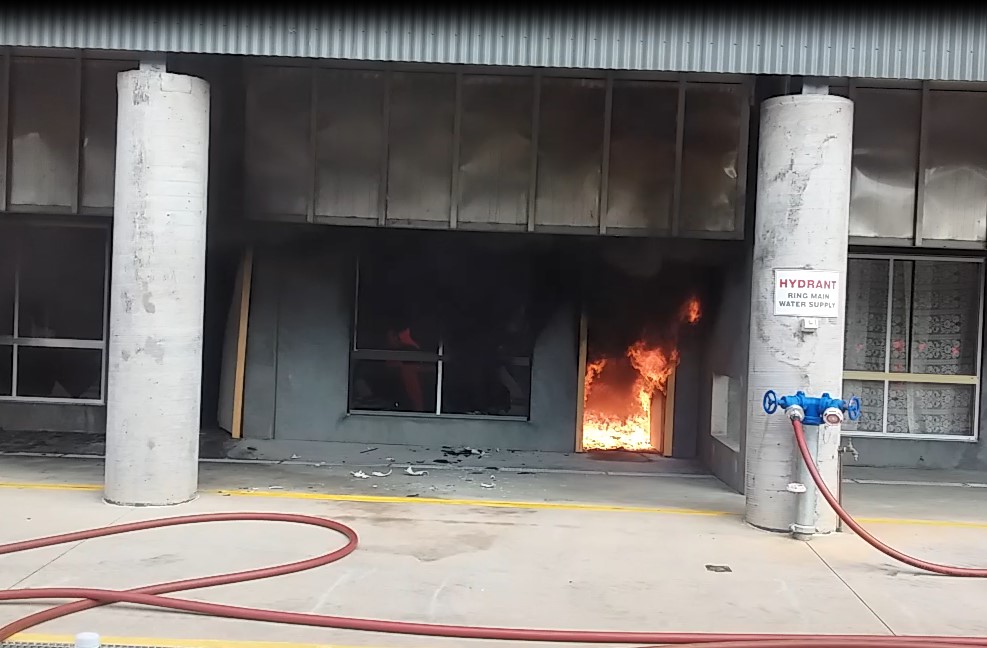Structural Fire Investigation Course
 Fire investigation room burn
Fire investigation room burn
The Structural and Vehicle Fire Investigation course was recently conducted at the purpose-built fire investigation training facility at VEMTC Huntly training campus.
Running from April to June 2023, 10 people completed the course which was delivered in three parts:
• Introduction to Fire Investigation (Structural)
• Structural & Vehicle Fire Investigation
• Assessment (Theory & Practical)
Throughout the course, participants had opportunities to attend fire scenes within their districts under a mentor program with fire investigators to gainoperational practical experience.
The Structural & Vehicle Fire Investigation course consists of both theoretical and practical components, providing specialist training associated with scene examinations to determine the origin and cause of structure and vehicle fires.
Subjects presented at the course included science of fire investigation, scene safety, investigation preparation, investigation techniques, structural fire scene indicators, explosives and explosions, accidental, electrical and gas related fires, vehicle fires, fatal fires, evidence collection, canvassing witnesses, scene photography, reporting, and legal requirements.
Several room burns were undertaken throughout the course to demonstrate fire dynamics and fire scene indicators. This provided the participants with the opportunity to view firsthand the various stages of fire development.
The burn rooms have several key technological features, including one which allows fire dynamics to be studied. Thermocouples can be installed in each burn room at three levels – ceiling, mid-level, and floor level to record the temperatures generated in the rooms. This data is displayed, recorded, and used to teach Fire Investigators about fire dynamics.
The room burns were also recorded in order to be reviewed back in the classroom to further discuss fire dynamics and timeframes associated with the fire’s ignition through to flashover.
Relevant case studies were also presented throughout the courses by experienced Fire Investigators to reinforce key learnings and investigation techniques.
This combination of training allowed participants to obtain the required practical knowledge and skills to undertake fire investigations involving structures and vehicles.
As part of the practical assessment for the course, three scenarios based on real-life fire scene investigations were set up in the purpose-built rooms. Each room was recorded before the ignition of the fires to detail what the rooms looked like and the placement of furnishings and items prior to the fires occurring. The rooms were then filmed from the ignition of the fire through to the different stages of fire development and finally to the extinguishment of the fire.
As part of the assessment, participants were divided into teams and were required to investigate the fire scene to establish the origin and cause of the fire, using the techniques and principles they had been taught throughout the course.
To ensure the scenes were as realistic as possible, the teams were provided witnesses during the investigation, including the incident controller and/or first firefighter on scene, police officers, the owner/occupier of the property, business owner, neighbours, etc.
At the conclusion of the practical assessment, the teams presented their findings along with the fire investigation reports.
Overall, the course was well received by the participants who attended and allowed them to undertaken specialist training to further enhance their knowledge and skills to become trained as fire investigators.
| Submitted by |
Nicole Harvey |